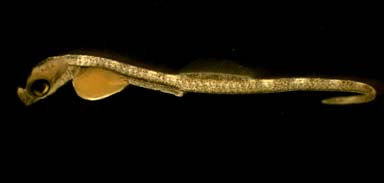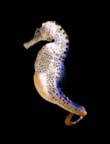|
|
seahorse with brood pouch |
Key reference:
Vize, P.D. and Smith, H.W. (2004). A Homeric view of kidney evolution. Anatomical Record 277: 344-354.
Some highly advanced fishes have adapted their kidneys to the dehydrating conditions of the oceans by altering the physiological basis of kidney function. Rather than filtering the blood through a glomerulus and recovering solutes and water via active transport processes- they simply excrete wastes into the kidney tubules via trans-epithelial transport. This has a major energetic advantages as the kidney no longer needs to resorb all that water...
Algomerular kidneys (= kidneys that lack glomeruli) have independently evolved in a number of different marine fish families. Some are partially glomerular/partially aglomerular, some start out glomerular when in fresh water and with migration to the sea become essentially aglomerular, and some are aglomerular all the time. Members of this later group include seahorses and pipefish.
We are extremely interested in how aglomerular kidneys develop, both to look for differences that give insight into how glomeruli form, and to learn how this amazing adaptation evolved. Simply by looking at gene expression patterns in developing seahorse embryonic kidneys and noting differences to patterns observed in glomerular marine fish (sticklebacks, salmon etc.) we can determine a lot about what genes are important for the development of this structure.
Seahorses and pipefish are a great embryological system, as pregnant male fish provide hundreds of synchronously fertilized embryos. They are also very cool to watch cruise around the lab aquaria. We collect seahorse and pipefish embryos from pregnant males then use them to study the development of the kidney and patterns of gene expression during embryogenesis.

 p
p